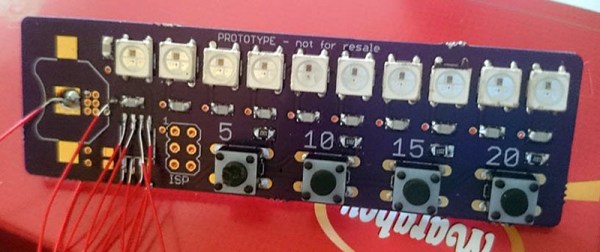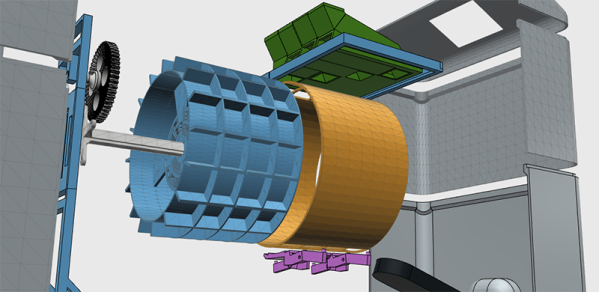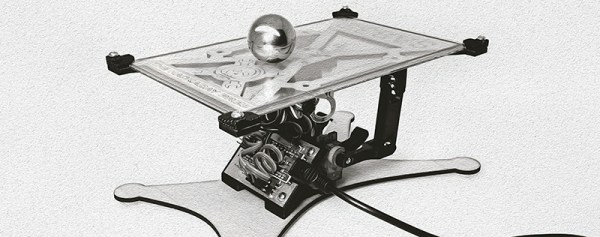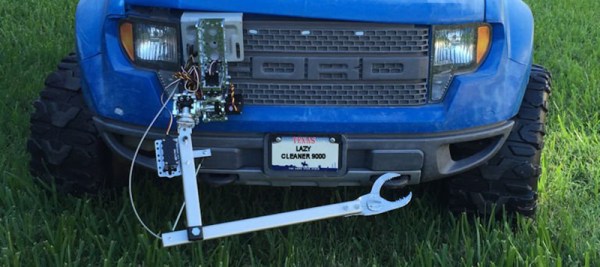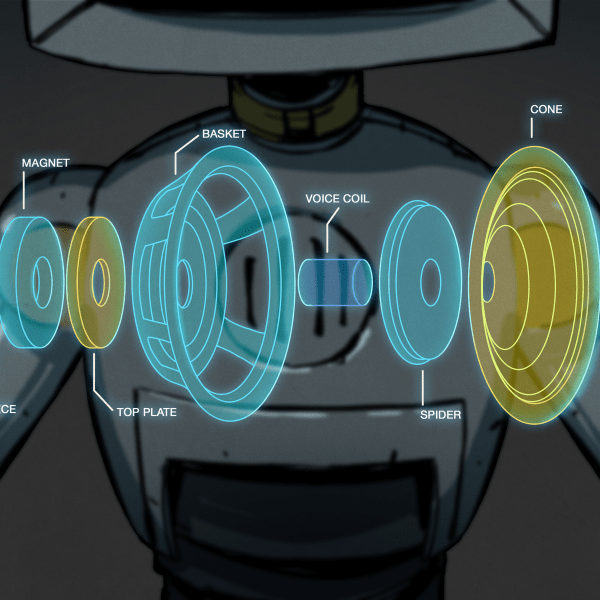[jens.andree] found that many people on the autism spectrum have problems perceiving time. This makes the simplest tasks at home or at school harder. To help solve this problem, he’s created the Timstock Slim for this year’s Hackaday Prize. It’s a timer with four buttons to count down 5, 10, 15, or 20 minutes, with a neat LED bar graph showing the remaining time.
The Timstock Slim is an extremely simple device – it’s just an ATTiny84, a few shift registers, some LEDs, resistors, buttons, and a coin cell battery clip. It also does exactly what it says on the tin; it counts out a few minutes at a time, while providing visual feedback in the form of a bunch of LEDs.
Interestingly, this device may be useful to more than just those with autism; the pomodoro technique of time management uses a similar device – a kitchen timer – to keep its adherents on track. With no modifications at all, [jens’] Timstock could be used for a slightly modified pomodoro technique, geared towards 5, 10, 15, or 20 minute increments.

